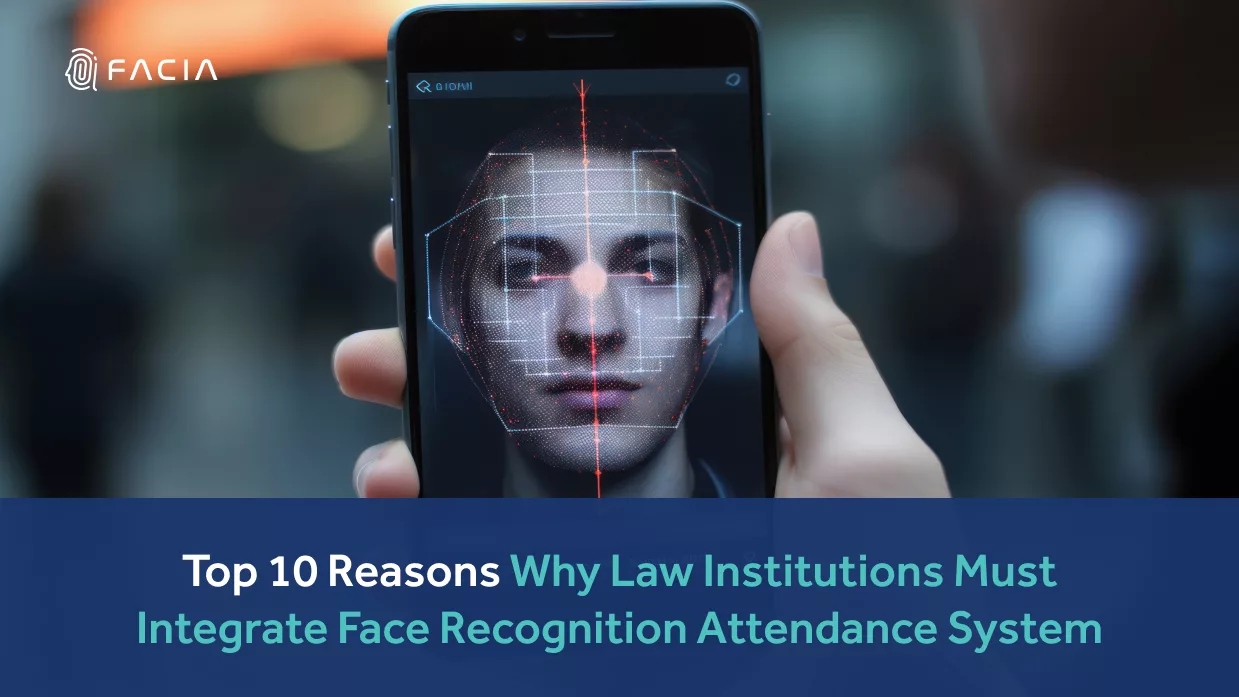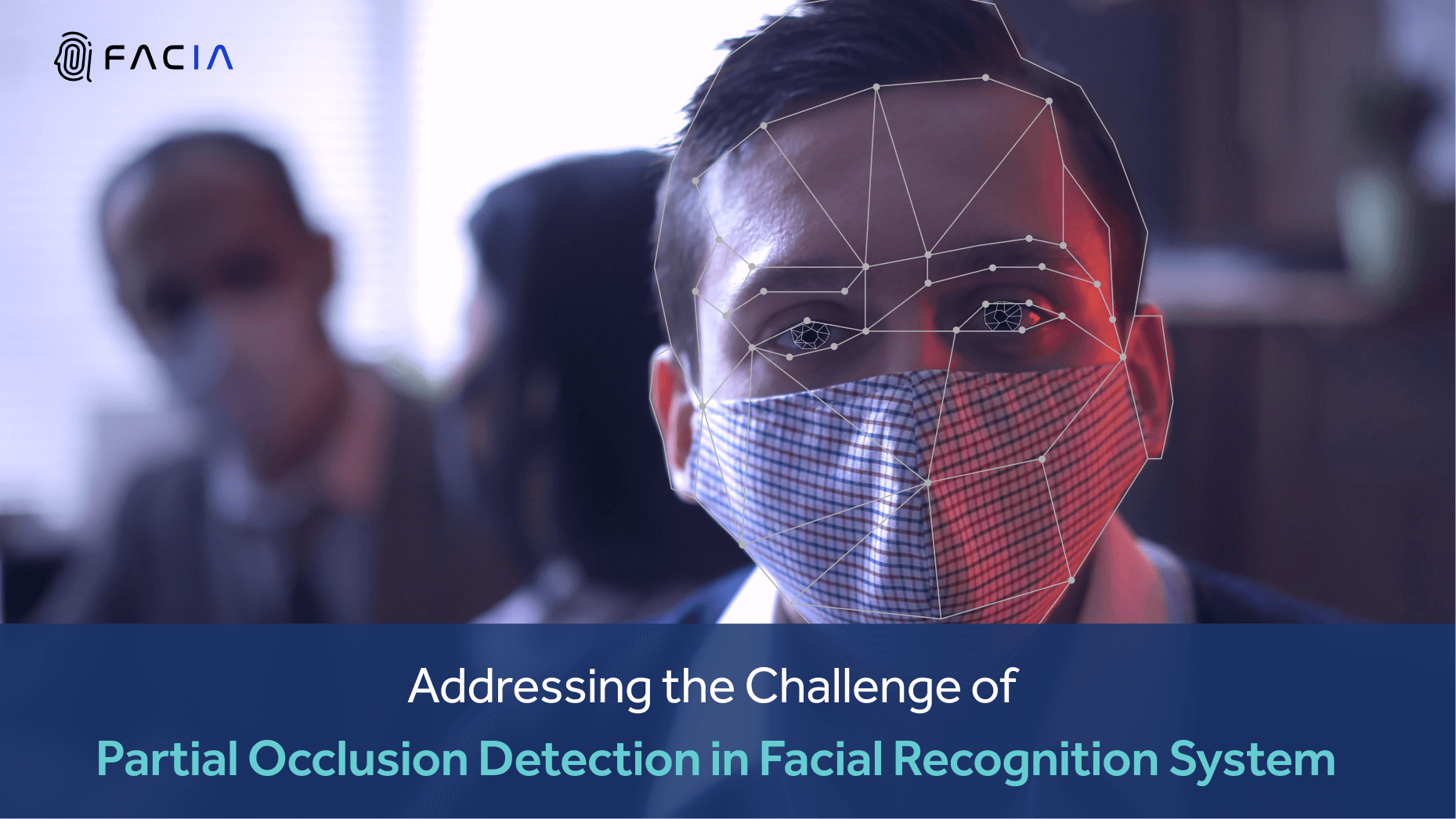
Why Law Institutions Must Integrate Face Recognition Attendance System
Author: admin | 17 Jan 2024In This Post
The law industry has severely diminished lawyers’ well-being, as 52% of lawyers face burnout due to the conventional management process. Cognitive issues can negatively impact lawyers’ ability to stick with ethical standards. According to the Australian Journal of Legal Ethics research, lawyer’s burnout can compromise:
- Their capacity to represent diligently
- Execute their fiduciary responsibilities
- Maintain customer confidentiality
Reduced cognitive working and exhaustion lead to oversights and mistakes, triggering disciplinary actions. That’s why the law industry has also transformed from manual work to AI-powered technologies, specifically by enforcing a face recognition attendance system.
Biometric face recognition time attendance has escorted an advanced era of accuracy, efficiency and safety to track employee attendance by leveraging biological features. In 2022, the market size of face recognition attendance systems reached $1.37 billion and is forecasted to attain $4.88 billion by 2030 at a CAGR of 17.2%.
Key Takeaways
- Face recognition attendance system eradicates the chances of human errors by ensuring authenticity in managing employee records.
- Advanced liveness detection provides additional security layers that prevent identity theft.
- Facia reduces the conventional paper-based sign-in sheets process and attendance management cost.
However, this fact isn’t enough to explain the necessity of advanced biometrics solutions, and that’s why it’s essential to understand this concept deeply.
Deep Analysis of a Face Recognition Attendance System
An AI-powered face recognition attendance system is a digital biometric technology that verifies and authenticates the user’s identity using their behavioural and physical traits. Such features include:
- Facial imprints
- Fingerprints
- Palm prints
- DNA sequences
- Iris patterns
Therefore, the preliminary system reduces the requirement for manual record and timekeeping methods. These proximity or manual time cards provide tamper-proof and accurate attendance tracking systems.
How Does Face Recognition Attendance System Work?
The preliminary aim of this advanced technology is to enrol employees on their software database. For future identification, every employee’s unique iris pattern and facial features are scanned and recorded. Hence, when an employee interacts with the face recognition attendance system, the device automatically captures and compares their current facial features with the pre-recorded information in the database. This process assists in real-time and authentic employee verification.
After completing the identification and verification process, the system automatically marks the employee’s attendance to record their departure or arrival time. By doing so, the effective attendance data is efficiently stored for future analysis and reference.

What Benefits Can Get From Face Recognition Attendance System?
AI-powered technology proves to be beneficial for law enforcement, so let’s explore quickly and understand why it’s necessary for them. The following are the benefits of the face recognition attendance system:
Equitable Compensation
Face recognition attendance system assists lawyers in justifying and quantifying the work hours they spend executing tasks. This is essential to calculate accurate payment for their services.
Strengthen Relationships with Clients
AI-powered face recognition attendance systems assist lawyers in tracking their clients’ time to charge them accordingly. This process promotes transparency and fairness with clients.
Provides Valuable and Real-Time Insights
Lawyers can efficiently achieve real-time insights into different cases’ profitability, clients, and practice areas by thoroughly analysing the time from the face recognition attendance system.
Robust Project Management
Lawyers schedule their time to manage their workload and effectively meet deadlines using a face recognition attendance system. It helps prioritise their tasks, ensure timely service delivery, and easily track progress.
Ensure Legal Ethics
Time management and ensuring compliance with benchmarks are ethical responsibilities of lawyers that can be quickly done through face recognition attendance systems. Doing so allows them to seamlessly make accurate decisions about resource allocation, business development efforts and pricing strategies.
Effective Resource Planning
Instantly monitoring the client’s average time and effectively tracking their data is now easy with an advanced face recognition attendance system. This system completes multiple tasks that help make better future resource plans and allocates the budget accordingly.
Top 10 Reasons Why Law Institutions Should Incorporate Face Recognition Attendance System
The legal trends report suggests that 37% of lawyers spend their time on billing, meaning that the majority of their time can be saved by using automation. Lawyers can easily overcome productivity issues by implementing a face recognition attendance system. Therefore, the following are effective practices to assist lawyers:
Effective Time Recording
Lawyers must record their time after completing their work as early as possible, reducing chances of creating misunderstandings or forgetting billable activities. Here, cutting-edge technologies have made it efficient for lawyers to record their time entries.
For example, accessing their billing and time records on their phones is now easy. Another way for non-tech-savvy lawyers is to share time information with their legal assistants. Regardless of choosing any option, the solution is to set an entrance time to record it accordingly. That’s the way through which lawyers can instantly keep track of their working hours.
Be Specific in Providing Essential Details
Lawyers can upload sufficient information about their completed tasks, client information, work nature, and time consumed in the face recognition attendance system. This assists in strengthening client trust and justifies the work hours.
Use Standardised Abbreviations or Codes
The face recognition attendance system develops continuous abbreviations or distinctive codes to classify different tasks. These include client meetings, research, court appearances and drafting. Hence, it enables swift analysis and identification of time entries.
Seamlessly Track Non-Billable Activities
AI-powered face recognition systems distinguish between working and non-billing hours. Administrative tasks, professional development, and internal meetings included in non-billable tasks must be recorded separately to acquire real-time insights for complete resource allocation.
Instantly Provide Real-Time Reports
A digital time-tracking system is essential in authentic time recording. Face recognition attendance systems provide features such as calendar integrations, automated invoice generation, timers, real-time reports and reminders. These AI-powered systems streamline the timekeeping procedures, easily manage and organise working hours.
Fast-Track Budgeting Process
The face recognition attendance system effectively estimates the time needed for different projects and tasks depending on the lawyer’s experience. That’s how they can manage customer expectations and track their productivity. Regularly cross-matching actual time with the utilised time can refine future estimates.
Regularly Review Lawyers’ Attendance
Keep aside time at the day’s or week’s end to edit and review the time entries for their authentic usage. Hence, this system ensures consistency and accuracy in recording working hours.
Examine Recorded Data
The face recognition attendance system interprets time data by providing in-depth and real-time insights into work patterns, helping in better decision-making, and recognising improvement areas.
Hands-on Training
Law firms properly train their employees about using the face recognition attendance system. So they may know about proper standards and guidelines to ensure accurate time entries.
Saves Customers Time
The face recognition attendance system automatically updates clients about the events and how much time they can save. Hence, effective communication with clients assists in establishing trust.
How Does Facia Come into Vision?
Facia’s transparent and authentic face recognition attendance system plays a vital role in lawyers’ lives and helps them grow professionally. However, they usually face different challenges in tracing time as the nature of their work is demanding. So, by incorporating Facia’s AI-powered face recognition systems, lawyers can confidently and professionally navigate difficulties, contributing to consumer satisfaction and success.
Hence, it’s high time for law firms to remove the old practices of attendance systems and introduce digital technology. An effective face recognition attendance system helps the law industry stand out and build a commendable reputation in the market.
Want to improve your lawyer’s productivity? Contact us for AI-powered systems.
Frequently Asked Questions
Face recognition attendance uses artificial intelligence (AI) to automatically identify and verify employees based on their unique facial features. This eliminates the need for manual attendance tracking, saving time and reducing errors.
Face recognition attendance systems provide a remarkable accuracy level compared to manual methods. Advanced systems reduce the error risk, ensuring accurate attendance tracking.
Facia is the fastest liveness detection platform globally, as it verifies users in less than 1 second with a 99.9% accuracy rate. They deliver secure and user-friendly systems that accurately meet the highest reliability standards.
Facial recognition systems offer superior accuracy and eliminate manual processes, saving time and reducing fraud. This contactless technology caters to remote workforces and improves hygiene, while also simplifying data management for HR. With additional features on the horizon, facial recognition is poised to revolutionize attendance tracking in the modern workplace.
Facia is the fastest face recognition with a 99.9% accuracy rate and verifies users in less than 1 second. Their AI-powered attendance system ensures accurate employee records from anywhere and benefits remote workers globally.






